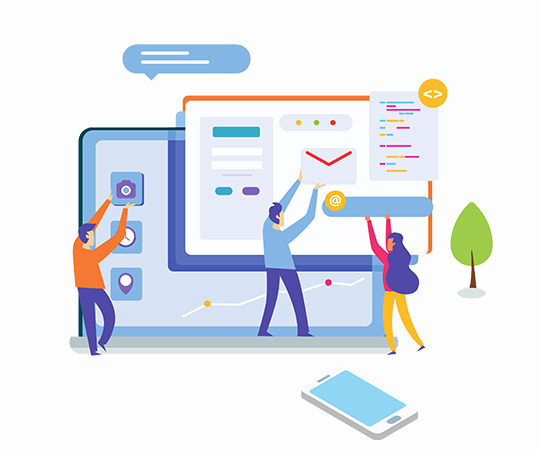The traditional classroom model of education is slowly but surely becoming a thing of the past, thanks to software development. With the advent of technology and innovative software applications, we are witnessing a seismic shift in the way students learn. From personalized learning experiences to interactive simulations, educational software is revolutionizing how we approach knowledge acquisition and retention. In this blog post, we’ll explore how technology is changing the face of education and what it means for educators and learners alike. Get ready to discover how software development is paving the way for a brighter future in education!
Introduction to Education and Software Development
It is no secret that technology has revolutionized the way we live, work, and play. But what many people don’t realize is that it is also changing the way we learn. In recent years, there has been a growing trend of using software development to improve education.
There are a number of reasons why this is happening. For one, it allows educators to tailor learning experiences to each individual student. Additionally, it can make learning more engaging and interactive. And finally, it can provide insights into how students are progressing and what areas need improvement.
One example of how custom software development is changing education is the rise of online learning platforms. These platforms allow students to access course materials and resources from anywhere in the world. They also make it easy for educators to track student progress and give feedback.
Another example is the use of gamification in education. This approach uses game-like elements to make learning more fun and engaging. Studies have shown that gamification can improve student motivation and performance.
So far, the results of using software development to improve education have been very positive. Students who use these tools tend to be more engaged and perform better than those who don’t. Additionally, they develop a deeper understanding of concepts and retain information better over time. As education evolves, it’s likely that we will see even more innovative ways that software development can help us learn effectively.
The Benefits of Incorporating Software Development in Education
As the world progresses, so does the importance of software development. With technology becoming more and more integrated into our lives, it’s no surprise that incorporating software development into our education system is seen as a reform worth making. Below are three ways in which doing so can change education for the better.
1) It can make learning more interactive: Studies have shown that students learn best when they’re actively engaged in the material. By making learning interactive with software development, students will be able to retain information better and have a deeper understanding of the concepts they’re being taught.
2) It can prepare students for the real world: A lot of jobs now require some level of coding or programming knowledge. By teaching students these skills from an early age, we’re preparing them for what they might face in their future careers. They’ll have a leg up on their competition and be able to hit the ground running once they enter the workforce.
3) It can help bridge the gap between different subjects: Software development is a great way to get students interested in other subjects like math and science. Oftentimes, these are seen as difficult or dry subjects to learn. However, by using code to create something tangible, students will be motivated to understand the theory behind what they’re building. This cross-disciplinary learning will benefit them greatly in the long run.
How Technology is Changing Education Systems
The way we learn is changing. It’s not just the availability of information that’s increasing, but the speed at which we can access it and the way we can access it. Technology is changing education systems by making information more readily available to students and by providing new ways for them to learn.
One of the most significant changes that technology has brought to education is the way information is shared. In the past, if a student wanted to learn about a particular topic, they would have to go to the library and find a book on that topic. Today, with the internet, students can access a wealth of information on any topic from anywhere in the world. This has made learning much more accessible and has allowed students to learn at their own pace.
Another change that technology has brought to education is the way in which students can interact with their peers and educators. In the past, most interactions between students and educators occurred in person, in a classroom setting. Today, however, there are many online platforms where students and educators can interact with each other. This allows for more collaboration and makes it easier for students to get help when they need it.
Technology has also changed the way in which assessments are conducted. In the past, assessments were often paper-based and required students to physically present themselves in front of an examiner. Today, however, many assessments are conducted online, which allows for a more flexible approach to testing and assessment.
Challenges of Integrating Software Development into the Curriculum
As the world increasingly relies on software to power both our personal and professional lives, it’s no surprise that demand for software developers is on the rise. This has led many educational institutions to consider integrating software development into their curricula in order to better prepare their students for the 21st-century workforce. However, there are a few challenges that come along with this decision.
First and foremost, teaching software development can be a daunting task for educators who may not have a background in the subject. It’s important to find instructors who are not only knowledgeable about the topic but also able to teach it in an engaging and accessible manner. In addition, the curriculum must be carefully crafted in order to strike a balance between theory and practice. Too much emphasis on one or the other can limit a student’s ability to truly understand and apply what they’ve learned.
There’s always the challenge of keeping up with the ever-changing landscape of technology. As new tools and platforms emerge, it’s important that students are taught using the most up-to-date methods so that they can enter the workforce with confidence.
Integrating software development into the curriculum can be a challenge, but it’s one that comes with great rewards. Students who are prepared for the 21st-century workforce will have a significant advantage as they enter into an increasingly competitive job market.
Conclusion
The potential of software development to revolutionize education is vast. It has the ability to change the way we learn by providing us with new tools and techniques that can make learning more effective and efficient. In addition, it can also help us to better understand our own learning process and learn more effectively.
However, in order for software development to truly have a positive impact on education, it is important that we invest in it and promote its use. This means supporting developers who are creating new educational software, investing in research to improve existing software, and encouraging educators to adopt and integrate these tools into their classrooms. Only by doing so can we hope to unlock the full potential of this technology.




